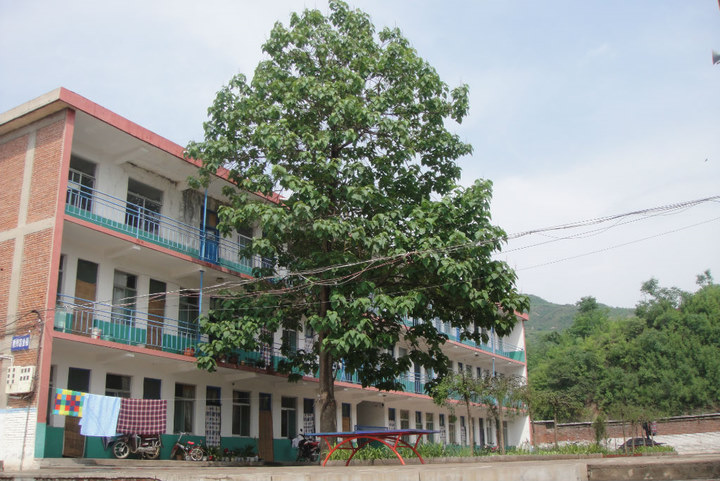
By Yifu Dong
It all started on that rainy afternoon, when our bus squeaked to a final stop in the muddy mountain road after a four-hour drive from Beijing. Travel-weary students eagerly hopped out of the bus, only to be greeted by a pungent stench that seemed to come out of nowhere. We were 11th graders from Beijing No. 4 High School, one of the most prestigious high schools in China. It was June 3rd, 2012, one of those normal days in early June, but it was also the day we started a weeklong volunteer teaching trip in the mountains of western Hebei Province.

There were about 30 of my peers and three teachers, and we stayed in the student dormitories of Xiaojiao Middle School in Xiaojiao Village, Pingshan County. Pingshan County is just west of Shijiazhuang, the provincial capital, and Xiaojiao Village is a stone’s throw away from Xibaipo, a crucial communist base during the Chinese Civil War from 1945-1949. However, before making the four-hour trip, the teachers told us that Pingshan County is a “national poverty county,” whose poverty is nationally recognized. In fact, there are about a dozen such “national poverty counties” in north and west Hebei Province, forming a protective circle around the municipality of Beijing.
Xiaojiao Middle School and Xiaojiao Elementary School, the two schools in which we volunteered, are just two typical schools in the countryside; many schools face similar challenges.
Life was difficult in Xiaojiao Middle School. Even though I remember every bit of the schoolyard, it is almost impossible to sum up the hardship students faced. Xiaojiao Middle School had more than 700 students from 7th to 9th grade. Nearly all students lived on campus, cramming into a dorm building designed to house 400 people. 12 students shared a room of 8 bunked beds, each three sharing two beds that lay side by side. Our group had two roomfuls of girls who could occupy one bed for each person, and fortunately for the 12 boys, four of them were able to occupy an office room and sleep on the tables, so the other eight could share a room of bunked beds. The dorm building had no running water, and there was mold all over the walls, with mosquitoes ravaging the stinky dorm rooms.
The classrooms were not great but there were desks and chairs, blackboards and enough chalk, better than many of the dilapidated classrooms of rural schools featured in Chinese media. The school even had a couple of laboratories, but the teachers hardly ever gave the students a break from rote learning, so the labs always remained empty. There were two lines of water taps in the schoolyard, where students washed their own dishes, cleaned their faces, brushed their teeth, washed their hair, and sometimes quenched their thirst with cold tap water that always had some mysterious black precipitations in it. I still don’t know how they get by in the winter, when the temperature easily drops below freezing point. Maybe boiled water is rationed in the dining hall. That seems to be the only plausible method.
The restrooms, like most restrooms in the Chinese countryside, had no running water. The stench was unbearable, especially at night and in the early morning, and inescapable even when holding one’s breath. My fellow classmates who spent more time in those dark-lit restrooms spotted some strange insects that got them really disgusted but excited at the same time.
During meal times, students would flock to the dining hall, getting into long lines, frequently cutting one another. The dining hall had neither tables nor chairs, so the students had to take the food and eat outside. The diet was simple and frugal; what I can remember includes only steamed white buns, steamed stuffed buns (baozi), porridge, pickles, and some vegetables. Green vegetables demand more from the soil, so the only green vegetable there was cabbage. Besides cabbage, the staple was potato. The only food that had a considerable amount of oil in it was the fried dough twist, which tasted great but also cost more. Many students, to my surprise, would only eat steamed white buns for their meals. This is the reason why many Chinese children in the countryside face severe malnutrition: they cannot afford to eat enough.
I was on their diet for a week, eating only white buns for some meals. I felt energized throughout my entire stay, but as soon as I returned home, I started eating voraciously. Before the trip, I had already been used to throwing away two thirds of my school lunch. After battling a weeklong malnutrition, however, I suddenly found myself gobbling down the entire school lunch in only a couple of minutes and still feeling hungry.
Coming up next: Part II, on learning and life.
Yifu Dong ’17 is in Branford College. Contact him at yifu.dong@yale.edu.